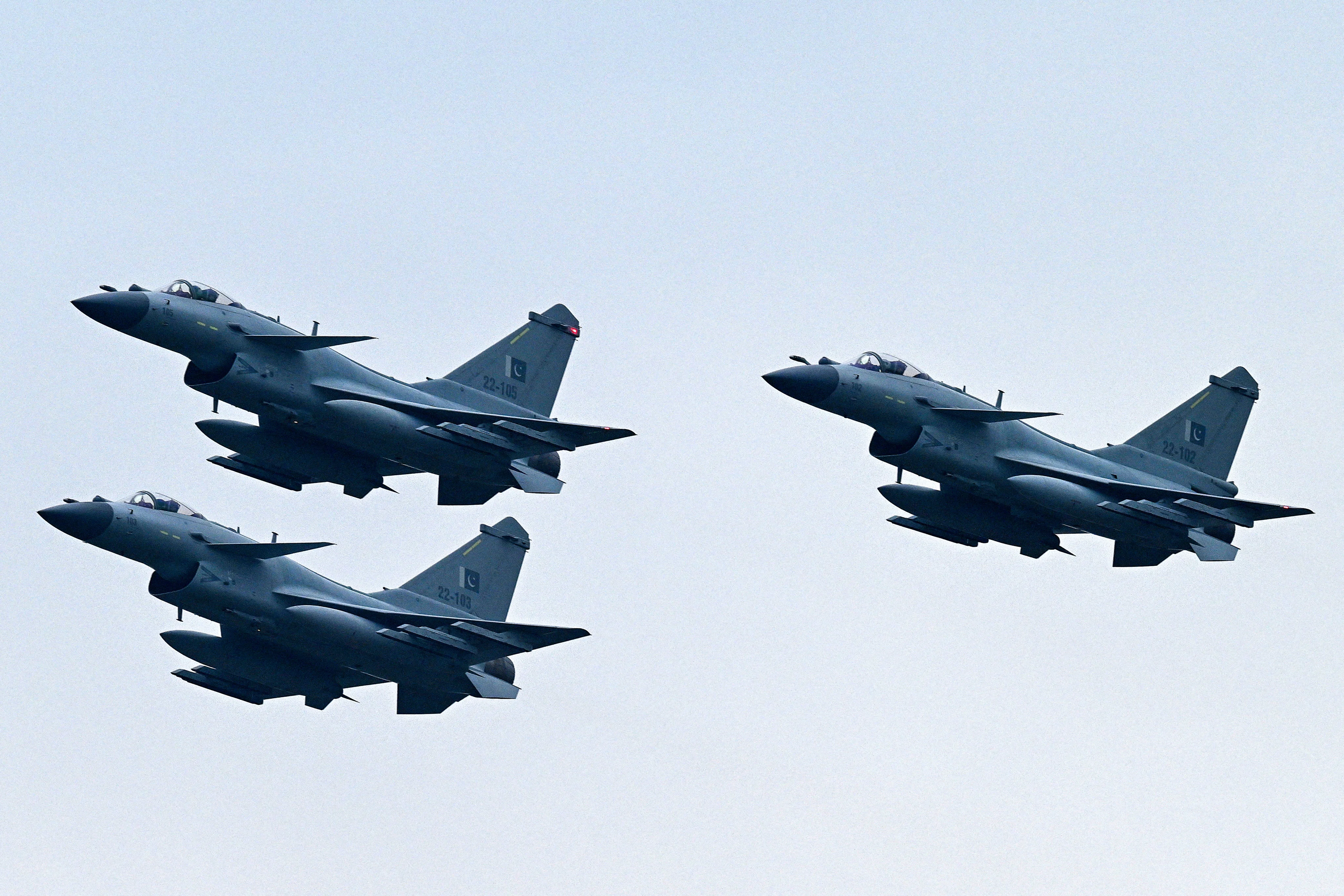By Amber Wang
Systemic warfare and surprise attacks will be key to winning future wars, according to a Study Times commentary published this week that appeared to be based on lessons drawn from the India-Pakistan conflict of early May.
“Recent real-world combat experience from regional conflicts has profoundly revealed the core logic of modern warfare: the contest of individual weapon performance has been replaced by systemic operations,” it said.
While the article – which appeared on Monday in the Central Party School-affiliated newspaper – did not explicitly refer to the conflict, it contained descriptions that closely mirrored what is reported to have occurred on the battlefield.
According to the commentary, a seemingly weaker force leveraged an imported combat system – “combining data links, early warning aircraft, air defence systems, and coordinated fighter jets” – to overwhelm its opponent’s mishmash of weapons from different countries.
During the four-day skirmish, which began on May 7, Pakistan deployed a combination of Chinese-made weapons against Indian forces equipped with arms from Russia and several Western countries.
One of the conflict’s most notable developments was the combat debut of China’s 4.5-generation J-10C fighter jets, which Pakistan claimed were used to shoot down five Indian fighters, including three French-made Rafales.
Islamabad also reported that JF-17 fighter jets – co-developed with Chinese defence contractors – and China’s PL-15E air-to-air missile, which has a range of 145km (90 miles), played a role in its skirmish with India.
Other Chinese systems in Pakistan’s armoury include the ZDK-03 Karakoram Eagle airborne early warning and control aircraft and the HQ-9 air defence system, although there has been no official confirmation by Pakistan that these were deployed in combat.
India has acknowledged that it suffered an unspecified number of fighter jet losses and said that it destroyed one of Pakistan’s HQ-9P systems. Both New Delhi and Islamabad separately claimed victory.
The Study Times article offered a rare glimpse into Beijing’s perspective on the fighting, as China has refrained from commenting publicly on the reported debut of its weapons in the combat between its nuclear-armed neighbours.
The confrontation was a significant opportunity to assess the capabilities of Chinese weapon systems, especially since China has not fought a war since the late 1970s. There are also long-term implications for Beijing’s ambitions in the Western-dominated global arms market.
The article’s appearance suggests that China is not only closely observing its weapons’ performance but also the evolving combat tactics emerging from regional conflicts to inform its own warfare preparations.
The commentary stressed the importance of maximising key strengths – a concept it described as the “long board effect” – by enhancing core capabilities to make one’s strongest advantages even stronger.
These strengths “can often produce decisive or even game-changing effects during certain phases or types of operations,” it said.
The article also noted the critical role played by “surprise strikes” in achieving unexpected victories through “silent and unpredictable” actions. These could not rely on a single weapon or unit, but rather on the tight integration of systems, it said.
“From the moment an enemy aircraft takes off, our early warning aircraft must immediately detect it, guiding air-to-air and surface-to-air missiles to strike before the pilot even realises the danger.”
The commentary argued that traditional physical surprise attacks were becoming less effective. In their place were multi-domain coordinated operations spanning the physical, informational, cognitive and social domains.
These involve a combination of electronic deception, cyberattacks, cognitive interference, and cross-domain strikes – all aimed at creating confusion and misjudgment for the enemy, it said.
The article emphasised the strategic value of striking key nodes in an adversary’s operational system – including command centres, early warning systems, communication hubs and network infrastructure.
